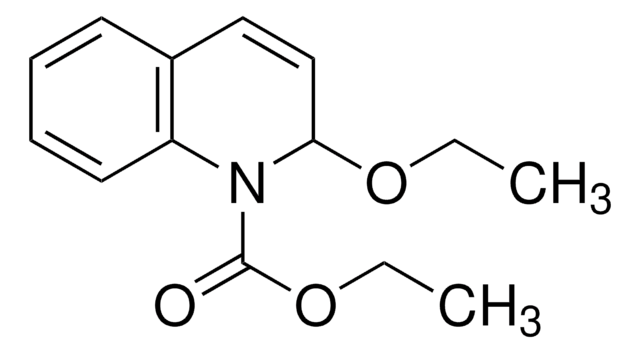01-1350
Acrylnitril
SAJ first grade, ≥98.0%
Synonym(e):
Vinylcyanid
About This Item
Empfohlene Produkte
Qualität
SAJ first grade
Dampfdichte
1.83 (vs air)
Dampfdruck
86 mmHg ( 20 °C)
Assay
≥98.0%
Selbstzündungstemp.
897 °F
Expl.-Gr.
17 %
Verfügbarkeit
available only in Japan
Brechungsindex
n20/D 1.391 (lit.)
bp
77 °C (lit.)
mp (Schmelzpunkt)
−83 °C (lit.)
SMILES String
C=CC#N
InChI
1S/C3H3N/c1-2-3-4/h2H,1H2
InChIKey
NLHHRLWOUZZQLW-UHFFFAOYSA-N
Suchen Sie nach ähnlichen Produkten? Aufrufen Leitfaden zum Produktvergleich
Anwendung
Biochem./physiol. Wirkung
Signalwort
Danger
Gefahreneinstufungen
Acute Tox. 3 Dermal - Acute Tox. 3 Inhalation - Acute Tox. 3 Oral - Aquatic Chronic 2 - Carc. 1B - Eye Dam. 1 - Flam. Liq. 2 - Skin Irrit. 2 - Skin Sens. 1B - STOT SE 3
Zielorgane
Respiratory system
Lagerklassenschlüssel
3 - Flammable liquids
WGK
WGK 3
Flammpunkt (°F)
23.0 °F - closed cup
Flammpunkt (°C)
-5 °C - closed cup
Persönliche Schutzausrüstung
Faceshields, Gloves, Goggles, type ABEK (EN14387) respirator filter
Analysenzertifikate (COA)
Suchen Sie nach Analysenzertifikate (COA), indem Sie die Lot-/Chargennummer des Produkts eingeben. Lot- und Chargennummern sind auf dem Produktetikett hinter den Wörtern ‘Lot’ oder ‘Batch’ (Lot oder Charge) zu finden.
Besitzen Sie dieses Produkt bereits?
In der Dokumentenbibliothek finden Sie die Dokumentation zu den Produkten, die Sie kürzlich erworben haben.
Unser Team von Wissenschaftlern verfügt über Erfahrung in allen Forschungsbereichen einschließlich Life Science, Materialwissenschaften, chemischer Synthese, Chromatographie, Analytik und vielen mehr..
Setzen Sie sich mit dem technischen Dienst in Verbindung.











